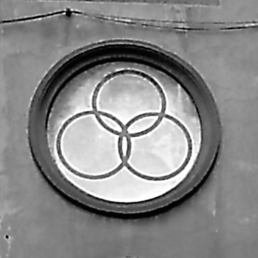A Writer's Musings on Communication
Forgive a poor metaphor. Communication is a boat we ride in an ocean most have not charted and which is, worse, always changing. We will return to this metaphor, in the end, to find whether it is so poor after all.
The urban theorist William H. Whyte wrote, “The great enemy of communication is the illusion of it.”[1] Communication is difficult, doubly when we act as if it is simple, triply when we believe it one species of act when really it is several.
While our meaning often passes to our audience intact, unless it alters their behavior, we cannot know whether we communicated at all. Many messages lose meaning along the way, emptied of content and no one ever knows it,[2] though sometimes miscommunications reveal themselves when recipients respond far differently than anticipated.
Travelers who live in multiple countries, among different cultures, know this well. The multilingual appreciate false friends, words only superficially resembling one another. An Italian speaker declares his mother lunatico. An English listener imagines Norma Bates, while l‘uomo italiano only means mamma is moody. Even within the same language, confusion threatens every word. Are we discussing the British mad or the American? What do we expect when we order bacon in Canada, eh?
The great enemy of communication is the illusion of it
— William H. Whyte
The difficulty of language compounds as words combine into sentences, into paragraphs, into ideas entire. The accumulated risks of miscommunication explode logarithmically, even when we pursue truthfulness and focus on ideas. Unintentional miscommunications breed falsehoods, as damaging as lies—a sea of nonsense.[3] Worse, we live in a world overrun by bloviators, more concerned with their own image than the contents of their messages—floods of crap.[4] Many politicians come to mind.
Yet language, slippery as it is, mostly works. It rests on socially agreed-upon meanings for arbitrary signs.[5] Language is a collective delusion, a cultural madness (British mad, not American), but at its core this lends it predictability, stability, and clarity; you say to-MAY-to, I say to-MAH-to, but we both mean a common nightshade. We achieve clarity. Caprese, anyone, con olio d’oliva e balsamico?
However, we humans also love symbol, and symbols complicate communication. They are an auxiliary to language, related but apart from it. One way or other we transform all objects into symbol, and symbols invite interpretation. Show a cross to a cross-section of humans, and we’ll be crossed in our explication: Device of faith? Idolatrous object? Method of execution? The corner of a mortise-and-tenon frame? BDSM furniture?
All these at once?
Symbols contain non-arbitrary elements (a dove is a non-arbitrary animal), but we gift them many arbitrary meanings (Holy Spirit, glorified sewer rat with wings, or magician’s prop?).[6] To further understand this, let us consider two symbols of Florence, a city bursting with symbols.
First, the Florentine Giglio or Lily suggests the Christian Trinity, yet it emerged BCE in Etruscan Fiesole, a city unassailably pagan, before Florence was a Roman colony. After the fourth century CE, Catholics appropriated the giglio and altered its meaning. Is it a symbol of the Etruscan founder, Fiorino? The Roman goddess Flora? Secular Florentine abundance? The Trinity? The Virgin Mary?
All these at once?
There is only one thing that you write for yourself, and that is a shopping list.
— Umberto Eco
Second, above a door in central Florence is a threesome of circles, arranged in a triangle. If Catholic, we might also associate it with the Trinity. Yet it too predates Christian Rome. Does it represent a triquetra? A pagan, feminine trinity? The triad of mother, father, and child? Archimedean reason derived from the vesica pisces? Borromean confidence and competence? Ballantine Beer? The seminal rock god and drummer John Henry Bonham?[7]
All these at once?
For some, symbolism is play. For others, it is deadly business.[8] When both, it is art. Words can also become symbols, with multiplicities of meaning, layers of context. When done wrong, we call this confusing. When right, we call it poetry, literature, or story. Humans love stories. While we crave clarity in them, we also lust for their ambiguity.
As we have seen, symbols defy fixed meanings, and they are distinct from language. With this in mind, we should see at least two modes of honest, good, fulfilling communication, two prudent shores we can seek in our poor metaphor.
In one, we understand what language is and are careful with its relationship to symbol: we eschew multiplicity, avoid ambiguity, and express ideas clearly. The helpful refrigerator manual. The honest political speech.
In the other, we understand what language is and are careful with its relationship to symbol: we develop layered ambiguity, attentively enrich meaning, and convey syntheses. The satisfying novel. The profound fairytale.
Unfortunately, an ocean (or symbology, or cliché) exists between these extremes. Most of us spend much of our lives adrift upon it, even rudderless. We’re either ignorant of it, and therefore mad (British), or it frustrates us, and we’re still mad (American). A few might even be mad about it, mad, meaning enthusiastic, meaning we revel in it, meaning it’s our cross to bear.
(All these at once.)
In this madness we are a coastguard, guiding others to shore. Now where is Polaris, and what have we done with our sextants?


